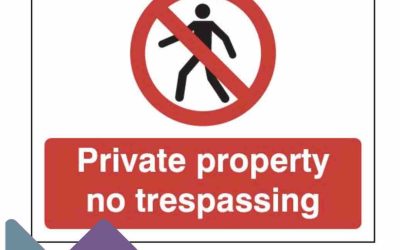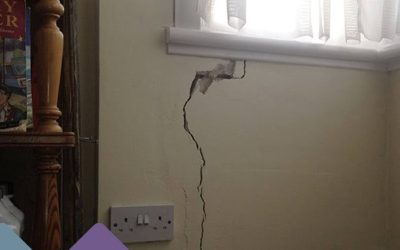The Party Wall Act 1996 is an act which enables certain rights to the owner of a property. It allows them the right to undertake specific works, if those works are done in a way that may otherwise amount to nuisance or trespass.
However, the act is also a tool which protects the interests of the adjoining owner. If the adjoining owner in question would suffer as a result of the works, then the act allows them to impose specific requirements and demand in advance of the works commencing.
Furthermore, the act has been designed to provide mandatory resolution of disputes in a way that is procedurally meditated by an appointed surveyor.
When negotiating the provisions of the act, notice must be given to the owner of a property (known hereafter as the building owner), when they intend to begin construction work as outlined in Sections 1,2 and 6 of the Party Wall Act. The scope for these acts is limited to the following:
Section 1:
Refers to a situation where it is proposed that a new wall at the boundary level is to be erected, both up to the boundary and upon it.
Section 2:
Refers to any concerns which exist regarding party structures, party fence walls, and the independent property of a neighbour. These are the most common types of party wall works.
Section 6:
Refers to any excavation work which takes place up to 6m away from a neighbouring building, structure or wall.
The information required in the initial notice will vary according to each scenario. While there isn’t a standard form of notice, the vast majority will include details of the works, timings, the act’s background and finally a pack of drawings.
While party wall notices are required for a great deal of work, there are two situations where it would not be necessary for a building owner to serve party wall notice upon their adjoining owner:
De Minimis Works
In an official explanatory booklet created by the government, it stipulates that there are some works on party walls that are so minor, they are not given as service of notice.
These are light fixings to the party wall, fixings of shelves, stripping plaster etc.
Other Works
Any works completed under section 2 of the act, provided that there is written consent obtained from all adjoining owners before the works begin.
There are three types of notice, laid out as follows:
Section 1 – The Line of Junction Notice
Section 3 – Party Structure Notice (Required for all works that fall within Section 2 of the act)
Section 6 – Notice For Adjacent Excavation
A party structure notice is required to be submitted at least two months before you want to start the work. For any other notice, the period is one month.
Every notice has mandatory information which must be contained within it, written as follows for each:
The Line of Junction Notice:
- An indication of the desire on part of the building owner to construct the wall.
- A proper description of the wall in question, including drawings where possible.
The Party Structure Notice:
- The name and address of the building owner responsible for the planned works.
- Details about the nature of the work intended to be carried out, including a planned start date.
The Notice of Adjacent Excavation:
- An indicator as to the proposal of the building owner.
- A statement which details whether or not the building owner in question intends to underpin or strength the foundations of the building of the adjoining owner.
- A set of plans and sections which showcase not only the site and depth of the excavation, but also what if there are plans to create a building and/or structure.
The majority of pro-forma notices that are currently in use have the following information recorded as a matter of due course. This applies regardless of the type of notice in question:
- The date of the notice in question.
- The names and details of the building and adjoining owners.
- A statement which highlights the commencement of the project in relation to the given notice period.
- A note which is considered to be advisory, warning the recipient of what will happen if they fail to respond to the works within 14 days or actively dissent to the planned works.
According to Section 10, when an adjoining owner does not consent to the works which have been announced by the building owner as in accordance with Sections 3 or 6 of the act, then both parties must agree to either the appointment of a single surveyor for the process, or each party just appoint their own surveyor for the process, and the two surveyors must then nominate a third for arbitration purposes.
If a project is straightforward in nature, then only the consideration of the time and manner in which works are carried out is necessary.
Obviously, this is different in more complicated scenarios. A large number of factors will require consideration, and a surveyor will hand the authority to grant the award to whichever party as is necessary, making sure to make the appropriate concessions beforehand to ensure cooperation from all parties.
This procedure will also be used in the area of resolving a conflict, which commonly arises between two neighbours who are at odds over the planned work. If this is the case, then the resolution helps to solve any issues surrounding damages to the adjoining owner’s property.
Any inaction on the part of the adjoining owner doesn’t actually halt the process in any way. The dispute can arise if the adjoining owner actively disagrees with the planned works, of course, but at the same time, that means that they have to communicate to have an objection.
However, according to the act, if an objection hasn’t been raised within a 14 day period, according to anything that falls within either Sections 3 or 6, then the act operates under the principle that a disagreement was raised regardless.
There isn’t a provision for disagreeing with the planned works in section one of the act. A dispute can still be raised, and it can still be valid, in respect to works notified under this section, but only as a descent on specific grounds.
If dissent has been raised, regardless of whether it was deemed or an actual dissent, all involved parties are required to seek out an agreed surveyor. However, in the event that all parties can’t agree on a single surveyor, then they must all hire their own.
In a situation where the adjoining owner fails to comply, the building owner is automatically granted the right to make a request to appoint a surveyor on behalf of the adjoining owner in order to proceed with the dispute resolution process
Once to surveyors have been appointed, they are obligated to agree between them on a third surveyor, who is involved for the sake of arbitration. They may be called upon by either party at any time in order to help dispute something, or make a final decision. Technically speaking, the third surveyor is never appointed, but under the act they do have the same powers as appointed surveyors for dispute resolution.
The third surveyor is not usually employed unless the first two surveyors have reached an impasse in terms of their deliberation process. Generally speaking, this can be to do with the end result for paying the surveyors. In some rare cases, the third surveyor will be asked to create the award, but in doing so may form an alliance with one of the existing surveyors in order to do so with as much precision as possible.
Whilst there is no strict definition on who can be a surveyor, it should definitely not be the same person who will supervise the process.
The award process is designed to set out what works can be carried out, and what works cannot. It will also govern who pays for the preparation of the award, and the inspection of the works, as well as who pays for the works themselves. In the event that the work can be proved to be for the sole benefit of the building owner, then they will be required to pay for all the costs.
If you would like to discuss party wall procedures with our team of party wall surveyors, give us a call today and we will be more than happy to assist you.




